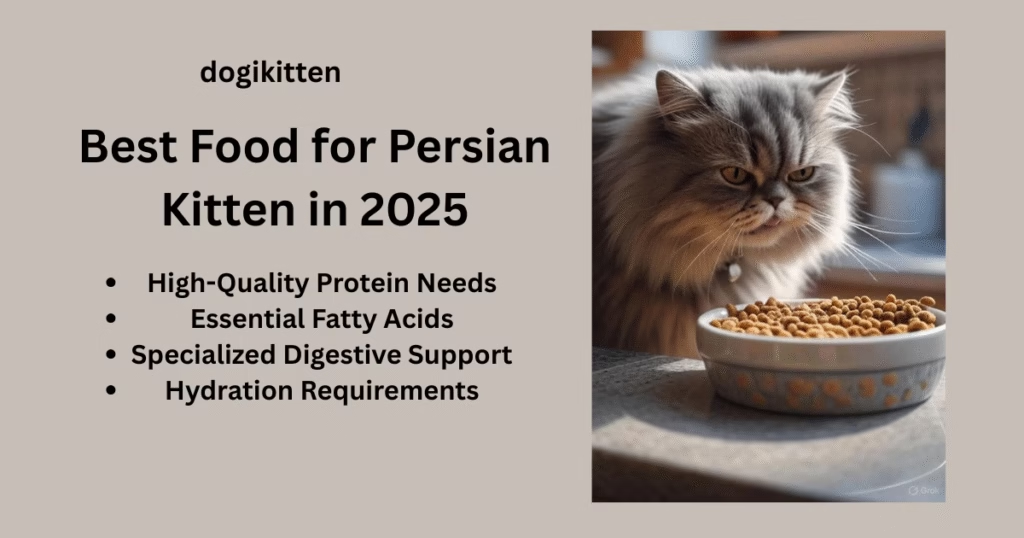
Discover the best food for Persian kittens with our comprehensive guide covering nutritional needs, feeding schedules, top food brands, and expert tips to ensure your fluffy companion grows healthy and strong.
1.Introduction
- Understanding Persian Kitten’s Unique Needs
- Why Proper Nutrition Matters
2. Nutritional Requirements for Persian Kittens
- High-Quality Protein Needs
- Essential Fatty Acids
- Specialized Digestive Support
- Hydration Requirements
3. Best Food Types for Persian Kittens
- Wet Food Benefits
- Dry Food Considerations
- Combination Feeding Approach
4. Top Food Brands and Products
- Royal Canin Persian Kitten
- Hill’s Science Diet Kitten
- Premium Alternative Options
5. Feeding Schedule and Guidelines
- Age-Based Feeding Frequency
- Portion Control
- Transition Timeline
6. Common Feeding Problems and Solutions
- Digestive Issues
- Picky Eating
- Weight Management
7. Foods to Avoid
- Toxic Ingredients
- Inappropriate Human Foods
- Low-Quality Options
Understanding Persian Kitten’s Unique Needs. Best Food for Persian Kitten
Persian kittens are among the most distinctive feline breeds, with their luxurious long coats, flat faces, and gentle personalities making them beloved companions worldwide. However, these adorable characteristics also create specific nutritional requirements that differ significantly from other cat breeds. Their brachycephalic (flat-faced) structure, developing digestive systems, and coat maintenance needs all influence their dietary requirements.
Persian Cats have unique nutritional needs that set them apart from their feline counterparts. Their long, dense fur requires a diet rich in omega-3 and omega-6 fatty acids to stay lustrous and healthy, while their distinctive facial structure means they need easily chewable or digestible food to prevent feeding difficulties. Additionally, their digestive system develops gradually and remains immature for an extended period, making proper nutrition crucial during their growth phase.
Nutritional Requirements for Persian Kittens
High-Quality Protein Needs
Persian kittens require significantly higher protein content than adult cats to support their rapid growth and development. Look for protein content around 40% in kitten food, with high-quality protein sources like chicken, turkey, or fish helping build strong muscles. These protein sources should be easily digestible, as Persian kittens’ digestive systems are still developing.
The protein requirement is particularly important because kittens are obligate carnivores, meaning meat isn’t just the main course—it’s the whole dining experience. With up to 50% of their diet being protein, they essentially run on a meat-based operating system. High-quality protein sources such as chicken, turkey, or fish help build strong muscles, while the right balance of calcium and phosphorus ensures robust bones and teeth.
Essential Fatty Acids for Coat Health
Omega-3 and omega-6 fatty acids are crucial for Persian kittens’ coat development and overall health. These essential fatty acids act like high-speed broadband for their fur’s health and shine, ensuring glossy coats and reducing skin irritations and excessive shedding. Persian cats’ long, luxurious coats require specialized nutrition to maintain their characteristic beauty.
The importance of fatty acids extends beyond coat health. These nutrients support brain development, immune function, and overall cellular health. When selecting food for Persian kittens, look for formulas specifically enriched with omega-3 and omega-6 fatty acids.
Specialized Digestive Support
Persian kittens have sensitive digestive systems that require careful attention. Their digestive system develops gradually and remains immature for a while, making highly digestible proteins essential. Look for foods containing prebiotics and adapted fiber content, including psyllium, to help support a good balance in intestinal flora.
The specialized digestive needs also mean that Persian kittens benefit from foods with limited carbohydrates. Their system prefers a low-carb diet to prevent digestive issues and weight gain, with grains kept to a minimum. Persian cats are also prone to diabetes, so minimizing carbs from grains helps control blood sugar, making grain-free wet foods ideal.
Hydration Requirements
Persian cats are prone to dehydration due to their dense coats and tendency not to drink sufficient water. With their thick coat and brachycephalic skull, Persians can suffer from respiratory problems, especially in hot weather, making adequate hydration even more critical. Wet food helps ensure they get enough moisture, which is crucial for their overall health and can help prevent issues like urinary tract problems8.
Persian cats also have a higher occurrence of polycystic kidney disease compared to other cat breeds, making extra moisture intake through moist foods even more important. Some veterinarians advise feeding Persian cats a diet that includes 80% moist foods.
Best Food Types for Persian Kittens
Wet Food Benefits
Wet food is often highly recommended for Persian kittens for several compelling reasons8. Persian cats have flat faces which can make eating dry food challenging, especially during teething periods, and wet food is softer and easier to chew, making it an excellent option for both kittens and adult Persians8. The high moisture content in wet food, typically between 70% and 85%, helps ensure proper hydration8.
Wet food also tends to have more animal protein and fewer carbohydrates compared to dry food8. Since cats are obligate carnivores, they need a diet rich in animal protein and moderate in fat with minimal carbs, and wet food aligns more closely with this natural diet8. Persian cats generally prefer wet food and benefit from a diet that consists mostly of moist foods.
Dry Food Considerations
While wet food offers numerous advantages, dry food isn’t entirely off the table and has its own benefits8. Dry kibble can help reduce tartar and plaque buildup, contributing to better dental hygiene8. However, the kibble design is crucial for Persian kittens due to their unique jaw structure.
Royal Canin Persian Kitten, for example, features specially designed tiny rectangular kibble with a soft texture that’s easy for Persian kittens to pick up and chew. The “Almond 11” shape is specifically designed to make it easier for Persian cats to grasp with the underside of their tongue. When feeding dry food, ensure it’s specifically formulated for Persian kittens and consider adding water to increase moisture content.
Combination Feeding Approach
Many experts recommend a combination feeding approach that incorporates both wet and dry food to maximize benefits. This method allows Persian kittens to receive the hydration benefits of wet food while still enjoying the dental health advantages of dry kibble. A typical approach might involve providing 3-4 wet meals per day alongside free-access dry food for kittens.
The combination approach also provides variety in texture and flavor, which can be important for Persian kittens who may be particular about their food preferences. This method ensures comprehensive nutrition while accommodating the specific needs of the Persian breed.
Top Food Brands and Products
Royal Canin Persian Kitten
Royal Canin Persian Kitten stands out as the gold standard for breed-specific nutrition. This formula is specifically designed for purebred Persian kittens up to 12 months old and addresses their unique nutritional needs. The food features highly digestible protein selected for its very high digestibility (over 90%), supporting digestive health and stool quality.
The specialized kibble design is particularly noteworthy—the small, rectangular shape with soft texture makes it easy for Persian kittens to successfully pick up and chew. Royal Canin Persian Kitten also includes a patented complex of antioxidants, including vitamin E, to help support the kitten’s natural defenses. The formula contains adapted fiber content, including psyllium, and prebiotics to promote balance in intestinal flora.
Key features include specialized brachycephalic jaw support, healthy growth promotion for long hair development, immune system support, and enhanced digestive performance. The food is enriched with omega-3 and omega-6 fatty acids specifically for coat health.
Hill’s Science Diet Kitten
Hill’s Science Diet represents another excellent option for Persian kittens. This formula is scientifically formulated to meet kittens’ unique nutritional needs and provides optimal development support. The food contains high protein levels essential for growing stages, as kittens require more protein than adult cats.
Hill’s Science Diet Kitten features DHA from fish oil for healthy brain and eye development, high-quality protein for building lean muscles, and balanced minerals for strong bones and teeth. The DHA, an omega-3 fatty acid, is essential for the development of brain and eye function in kittens and also supports a healthy skin barrier by decreasing inflammation.
The precise balance of minerals helps promote adequate teeth and bone development while preventing toxicity from mineral buildup in organs. The formula includes ingredients such as chicken and turkey meal, fish oil, and flaxseed to provide comprehensive nutrition.
Premium Alternative Options
Several other high-quality brands offer excellent nutrition for Persian kittens. Many Persian cat owners report success with premium brands that focus on high-quality ingredients and specialized formulations. When selecting alternatives, look for foods with real meat as the first ingredient, appropriate kibble size and texture for Persian kittens, and comprehensive nutritional profiles that address the breed’s specific needs.
Some owners also explore homemade options under veterinary guidance, incorporating ingredients like boiled chicken, fish, and appropriate vegetables. However, commercial foods specifically formulated for Persian kittens typically provide more consistent and complete nutrition.
Feeding Schedule and Guidelines
Age-Based Feeding Frequency
The feeding schedule for Persian kittens varies significantly based on their age and developmental stage. During the first four weeks, Persian kittens should nurse from their mother or receive kitten milk replacer every 2-3 hours, including overnight. This frequent feeding mimics the natural nursing pattern and provides essential antibodies and nutrients.
From 4 to 8 weeks, begin gradually introducing solid food while maintaining frequent feeding. Start with a gruel made by blending kitten milk replacer with high-quality wet kitten food, offering this mix four to six times daily. Persian kittens should be fed four times a day during this early stage.
For kittens 8 weeks to 6 months old, establish a regular feeding schedule of three to four meals per day. This reduction in frequency accommodates their growing stomach capacity and the increased nutritional density of solid food. Each meal should combine wet and dry food to promote dental health and hydration.
After 6 months, Persian kittens can transition to twice-daily feeding, which mirrors the natural feeding behavior they would adopt as adults. This transition should be gradual and monitored to ensure the kitten maintains proper weight and energy levels.
Portion Control Guidelines
Proper portion control is crucial for Persian kitten health and development. The amount to feed depends on the kitten’s age, weight, and activity level. A general rule is to feed an amount the kitten can consume in 15 to 20 minutes, ensuring adequate nutrition without overfeeding.
Royal Canin provides specific feeding guidelines based on age and weight. For kittens 2-3 months old weighing 0.8-2.1 kg, feed 40-69g of dry food daily. For kittens 4-6 months old weighing 1.8-3.9 kg, provide 55-77g daily. These amounts should be divided among the recommended number of daily meals.
When combining wet and dry food, adjust portions accordingly. For example, if using both kibble and wet food pouches, reduce the dry food amount as indicated in feeding guides. Always ensure fresh water is available at all times.
Transition Timeline
Transitioning Persian kittens through different feeding stages requires patience and careful monitoring. The transition from milk to solid food should occur gradually over several weeks, starting around 4 weeks of age. Begin with small amounts of gruel and gradually increase solid food consistency.
When changing food brands or formulations, implement transitions slowly over 7-10 days to prevent digestive upset. Persian cats are particularly sensitive to dietary changes and may experience stomach problems if transitions occur too quickly. Start by mixing 25% new food with 75% current food, gradually increasing the new food proportion.
The transition from kitten to adult food typically occurs around 12 months of age for Persian cats. However, consult with a veterinarian about the appropriate timing, as some Persian kittens may benefit from continued kitten formula slightly longer due to their slower maturation rate.
Common Feeding Problems and Solutions
Digestive Issues
Persian kittens are particularly prone to digestive problems due to their sensitive systems and gradual digestive development. Common issues include diarrhea, vomiting, and stomach discomfort, often resulting from inappropriate diets or feeding practices. Poor nutrition during the kitten stage can lead to long-term health problems, including obesity and dental issues.
To prevent digestive issues, focus on highly digestible proteins and avoid foods containing artificial additives, fillers, or by-products. These ingredients provide little nutritional value and may cause digestive upset. Choose foods specifically formulated for Persian kittens with prebiotics and adapted fiber content to support healthy digestion.
If digestive problems persist, consult a veterinarian immediately. Persian cats with food sensitivities may require prescription diets or elimination diets to identify problematic ingredients. Slow, controlled transitions between foods can also help prevent digestive upset.
Picky Eating Behaviors
Persian cats can be quite particular about their food preferences, making feeding challenges common. Their refined tastes and sensitive nature mean they may reject foods that don’t meet their standards. Additionally, their flat facial structure can make eating certain textures difficult, contributing to picky eating behaviors.
To address picky eating, try offering variety in both wet and dry food options. Persian cats often prefer different flavors and textures, so rotating between approved foods can maintain interest. Warming wet food slightly can enhance aroma and palatability.
If a Persian kitten struggles with dry kibble, consider adding water or switching to appropriately formulated wet food. Some owners find success with adding small amounts of oil designed for cats to make dry food more appealing. However, maintain nutritional balance and avoid adding excessive fats.
Weight Management
Persian kittens can be prone to weight issues if not properly managed. Their relatively sedentary nature combined with their love for rich, fatty foods can lead to obesity. Overfeeding at any meal can cause stomach discomfort and bloating, leading to slower digestion.
Implement portion control from an early age using measuring cups for accuracy. Feed at regular intervals rather than leaving food available all day, which helps control calorie intake. Monitor weight regularly and adjust portions based on body condition.
Persian cats should maintain moderate fat intake to prevent obesity while still supporting their coat health. Choose foods with appropriate fat levels and avoid excessive treats, limiting them to no more than 10% of daily caloric intake.
Foods to Avoid
Toxic Ingredients
Several common foods are toxic to Persian kittens and must be completely avoided. Onions, garlic, and chives are highly toxic to cats, even in small amounts, as they can damage red blood cells and cause anemia. Whether raw, cooked, powdered, or included in food seasonings, these ingredients should never be part of a Persian kitten’s diet.
Chocolate and caffeine-containing products are extremely dangerous, containing theobromine and caffeine that can cause rapid heart rate, tremors, seizures, and potentially fatal outcomes. Both milk chocolate and dark chocolate can cause vomiting, diarrhea, increased body temperature, rapid breathing, and seizures.
Dairy products, including milk, cheese, and cream, should be avoided as most cats are lactose intolerant. These products can cause gastrointestinal distress, vomiting, and diarrhea. For kittens requiring milk supplementation, use only kitten-specific milk formulas.
Inappropriate Human Foods
Raw eggs, meat, and fish pose significant risks to Persian kittens. These raw foods may contain dangerous bacteria like E. coli and Salmonella, leading to food poisoning. Raw fish also contains thiaminase, an enzyme that breaks down thiamine (vitamin B1), potentially causing neurological issues.
Grapes and raisins are toxic to cats and can cause kidney damage. Even small amounts can be dangerous, so these fruits should be kept away from Persian kittens entirely. Similarly, artificial sweeteners, particularly xylitol, can cause severe hypoglycemia and liver damage in cats.
High-sodium foods and processed human foods should be avoided as they can lead to dehydration and kidney problems. Persian kittens’ developing systems are particularly sensitive to excess salt and preservatives found in human food.
Low-Quality Food Options
Avoid commercial cat foods with poor-quality ingredients that provide little nutritional value. Foods containing excessive fillers such as corn, wheat, and soy should be avoided as they don’t provide appropriate nutrition and may cause digestive upset. These ingredients can also contribute to food allergies and sensitivities.
Foods with artificial preservatives like BHA and BHT should be avoided in favor of natural preservation methods. By-products and meal from unspecified sources indicate lower quality and should be avoided in preference for named meat sources.
Generic or very low-cost cat foods often contain inadequate protein levels and poor-quality ingredients that don’t support proper Persian kitten development. Investing in high-quality, breed-appropriate nutrition prevents long-term health problems and ensures optimal growth.
Frequently Asked Questions (FAQ)
What is the best age to start feeding solid food to Persian kittens?
Persian kittens can begin transitioning to solid food around 4 weeks of age. Start with a gruel made from kitten milk replacer mixed with high-quality wet kitten food, offering this mixture four to six times daily. The transition should be gradual, allowing the kitten to explore and taste at their own pace while their digestive system develops.
How often should I feed my Persian kitten?
The feeding frequency depends on your kitten’s age. Persian kittens under 6 months should be fed 3-4 times daily. After 6 months, you can gradually reduce this to 2 meals per day. Young kittens have small stomachs but high energy needs, requiring frequent small meals rather than large, infrequent ones.
Can Persian kittens eat dry food exclusively?
While dry food can be part of a Persian kitten’s diet, it’s not recommended as the exclusive food source . Persian kittens benefit from a combination of wet and dry food, with wet food being particularly important for hydration and easier consumption due to their flat facial structure. Wet food should comprise the majority of their diet.
What makes Royal Canin Persian Kitten different from regular kitten food?
Royal Canin Persian Kitten is specifically formulated for the breed’s unique needs. It features specially designed rectangular kibble that’s easy for flat-faced kittens to grasp and chew. The formula includes highly digestible proteins, adapted fiber content with psyllium, prebiotics for digestive health, and a patented antioxidant complex for immune support.
How do I know if my Persian kitten is eating enough?
Monitor your kitten’s weight gain, energy levels, and overall appearance. Persian kittens should gain 7-15 grams per day during their first weeks. They should be able to consume their allocated portion within 15-20 minutes. If your kitten seems lethargic, isn’t gaining weight appropriately, or shows signs of hunger shortly after meals, consult your veterinarian.
What should I do if my Persian kitten won’t eat dry food?
If your Persian kitten struggles with dry kibble, try adding warm water to soften it or transition to high-quality wet food. You can also try different kibble shapes designed for Persian cats, like Royal Canin’s specially designed rectangular kibble. Some kittens benefit from a small amount of cat-safe oil to make dry food more palatable.
Are there specific ingredients I should look for in Persian kitten food?
Look for high-quality animal protein as the first ingredient (chicken, turkey, fish), omega-3 and omega-6 fatty acids for coat health, prebiotics for digestive support, and appropriate vitamins and minerals. Avoid foods with excessive fillers, artificial preservatives, by-products, and ingredients like corn or wheat that provide little nutritional value.
When should I transition my Persian kitten to adult cat food?
Persian kittens typically transition to adult food around 12 months of age. However, some may benefit from staying on kitten food slightly longer due to their slower maturation rate. Consult with your veterinarian about the appropriate timing based on your individual kitten’s development and weight. The transition should be gradual over 7-10 days to prevent digestive upset.
How much water should my Persian kitten drink daily?
Persian kittens should have constant access to fresh, clean water. While specific amounts vary based on size and diet, kittens eating primarily wet food will drink less than those on dry food diets. The high moisture content in wet food (70-85%) helps meet hydration needs8. Change water daily and ensure multiple water sources are available.
What are signs that my Persian kitten has food allergies or sensitivities?
Watch for symptoms including digestive upset (vomiting, diarrhea), skin problems (itching, redness, excessive scratching), changes in eating habits, lethargy, or unusual behavior after meals. Persian kittens with food sensitivities may require special diets or elimination trials to identify problematic ingredients. Consult your veterinarian if you notice any concerning symptoms.
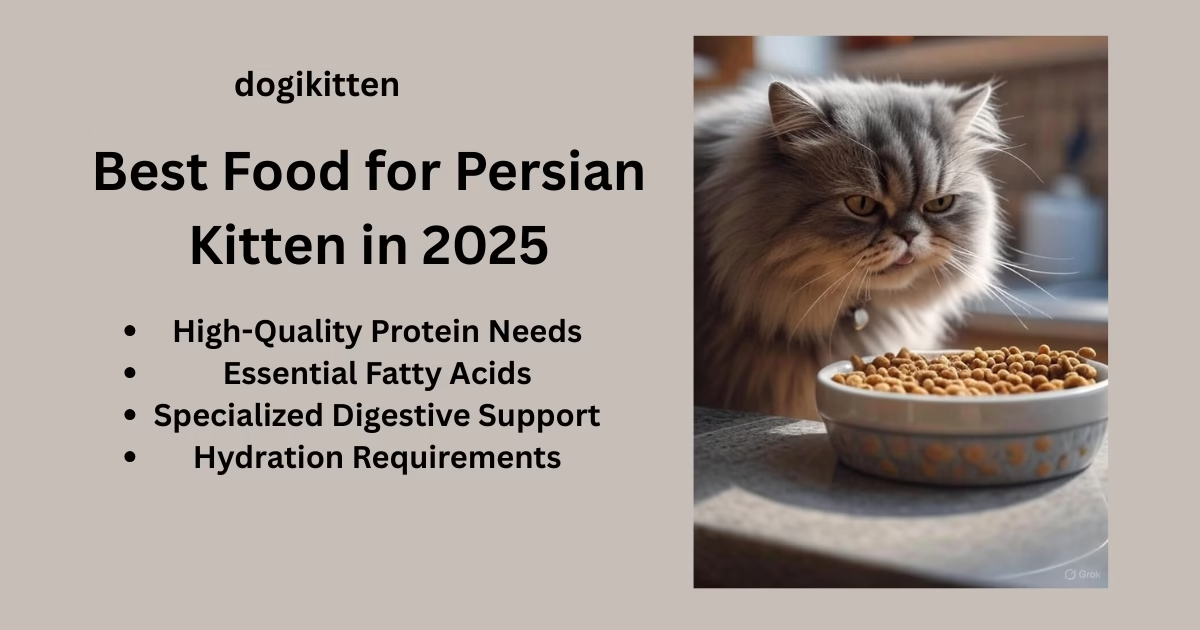
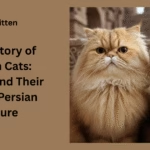




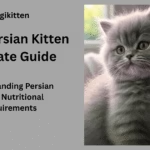
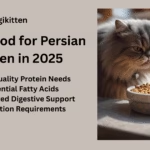
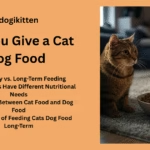
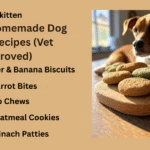
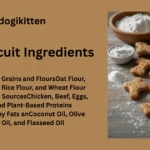
2 thoughts on “Best Food for Persian Kitten in 2025”